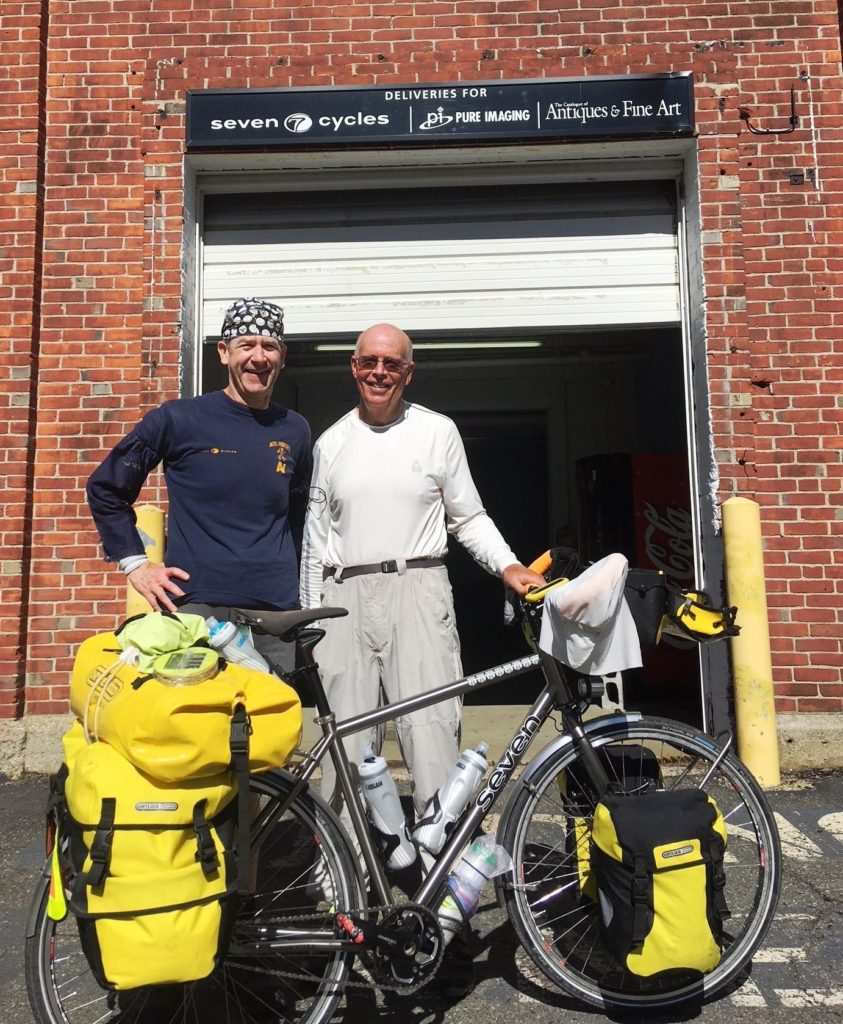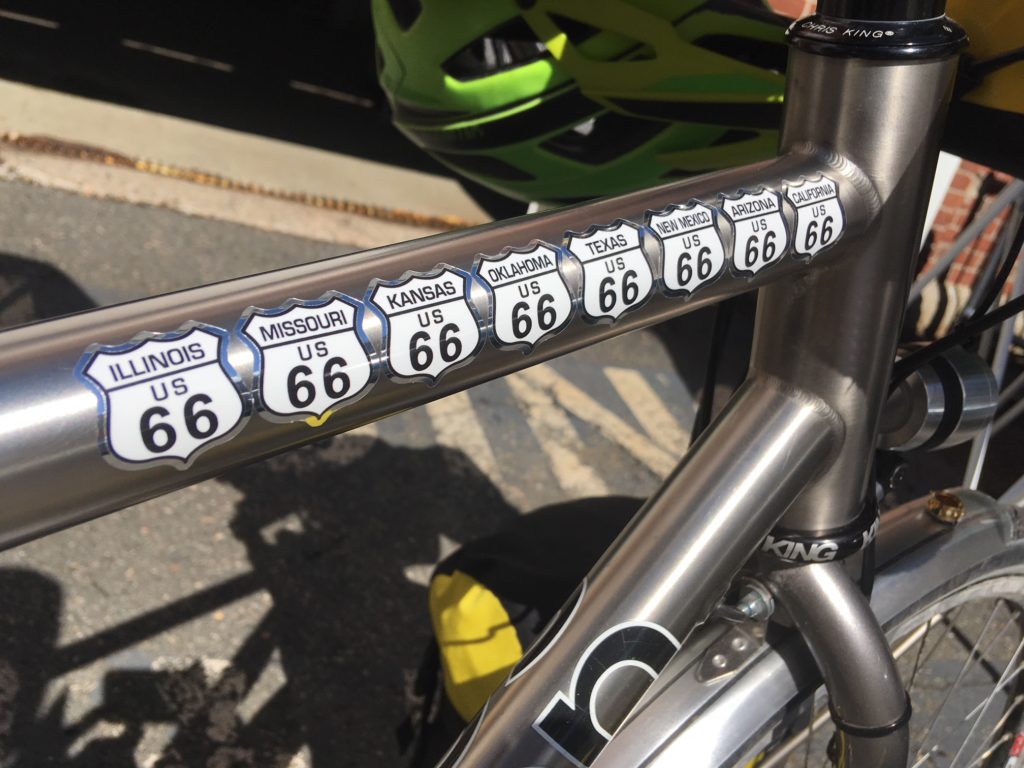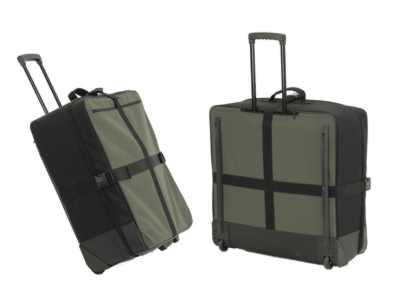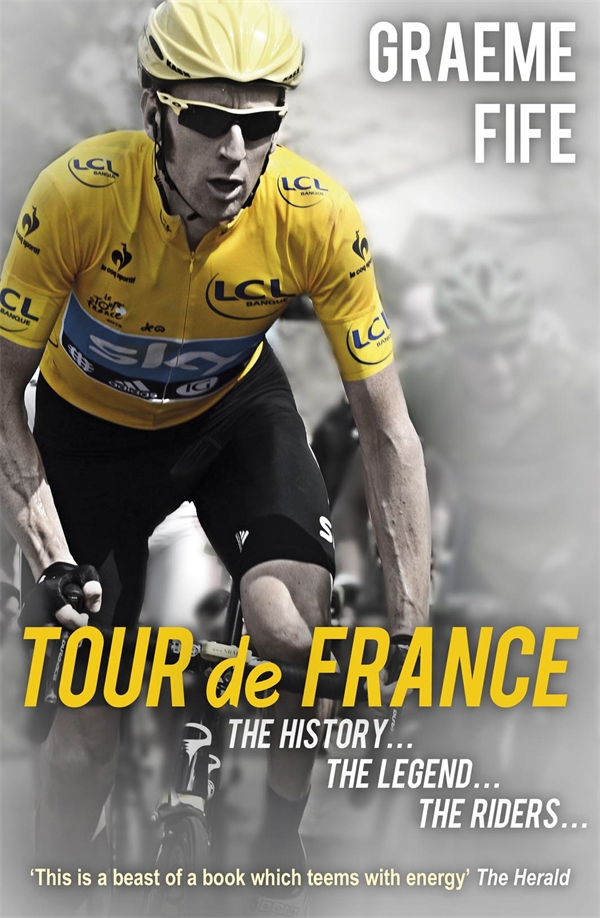
Bob came to visit us last week, as many of our riders do. But he didn’t drive up in a car, fresh from the airport. Instead, he rode his bike here, a heavily loaded Expat SL he got from our friends at Sabino Cycles in Tuscon.
He came, indirectly, from Santa Monica. Setting out from California, the Pacific Ocean swelling and rising behind him, he took Route 66 through California, Arizona, New Mexico, Texas, Oklahoma, Kansas, Missouri, and Illinois. Moving forward about 50 miles a day, he commented to us that he could have come faster, but he prefers to eat at all the diners, to talk to all the people.

From the end of 66, he rode north along the shore of Lake Erie to Niagra Falls, then the Erie Canal Path to Albany. He rolled through Western Mass, and on into Boston, where he stopped in to have his picture take with Tim, who welded his bike. He left us after a few photos and a good chat, and continued on to the Atlantic Ocean.
We got a thank you note from him a day later, which closed with a quote from the iconic writer of Western novels Louis L’Amour: “Too often I would hear men boast of the miles covered that day, rarely of what they had seen.”
Thanks for coming, Bob, and thanks for stopping to talk.



